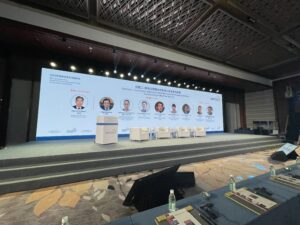
How Far has ASEAN Gone in Carrying out its Commitments on Skills Mobility under the ASEAN Economic Community Blueprint? Has ASEAN or its Member States Succeeded or Failed in Achieving and Progressing them?
The 27th ASEAN Summit last November 18-22, 2015 in Kuala Lumpur, Malaysia concluded with the release of the key reports entitled, ASEAN Integration Report 2015 and A Blueprint for Growth-ASEAN Economic Community 2015: Progress and Achievements. These reports highlighted that AEC already accomplished 92.7% of the High Priority Measures (HPMs) in the AEC Blueprint, and there are only the remaining 7.3% HPMs under the first and second pillars dealing with Single Market and Production Base and Competitive Economic Region that need to be fulfilled and accomplished. However, these figures should not be taken at face value and complacently precisely because the remaining 7.3% might be the most difficult ones to accomplish. And part of these challenging targets that need to be completed given its minimal achievements, progress, and development is the free movement of skilled labor in ASEAN through the implementation of the ASEAN Mutual Recognition Agreements (MRAs). Among the significant targets in the implementation of the ASEAN MRAs such as the (i) completion of the mutual recognition arrangements (MRAs) of the 8 professional sectors namely; (a)Engineering Services; (b) Nursing services; (c) Architectural services; (d) Framework for Surveying Qualifications; (e) Medical practitioners; (f) Dental practitioners (g) Accounting Services; and (h)Tourism professionals; (ii) implementation of the MRAs expeditiously according to their provisions; (iii) and identification and development of MRAs for other professional services, only the first one was concluded. The remaining two targets are still pending and they need more serious attention.

Moreover, the reports articulated that part of the nominal but most visible achievements of skills mobility in ASEAN were ascertained by some progress in implementing the MRAs on architectural services and engineering services partly because of the MRA approach, which involves the registration of recognized professionals at the ASEAN level. To date, some 1,252 engineers are recorded within the ASEAN Chartered Professional Engineers Register, together with 284 architects on the ASEAN Architect Register. The reports also stated that training toolkits designed to enable the mobility of skilled tourism professionals have been put in place, and these help the region’s drive to expand its tourism industry in conjunction with easier air travel.
However, these relative successes on skills mobility thus far do not at all reflect the aspirations behind the common objectives of the ASEAN MRAs which include; facilitating the mobility of services of professionals; exchanges of information and expertise; raising and promoting the adoption of best practices on standards and qualifications of the ASEAN’s workforce and facilitating capacity building and technology transfer.
Given the relatively limited success rate of the implementation of the ASEAN MRAs, more focused efforts must be put forward to progress on skills mobility to maximize growth and shared prosperity benefitting the 10 economies of ASEAN of more than 622 million people. On another note, the movement of skilled workers these days is particularly pressing with an ASEAN population that has doubled between 2007 and 2015, with a significant share of the ‘productive age’ population. More than that, skills mobility in ASEAN is very important for regional competitiveness and productivity and this implements the ASEAN MRAs being one of the policy tools for skills mobility in ASEAN all the more crucial and vital.
To leverage fully on the positive impacts of skills mobility in ASEAN which include but not limited to, (a) the augmentation of domestic production and increase productivity; (b) flexible and efficient labor market that would attract investments and skilled workers, thus will facilitate greater inflows of FDI, expanded trades in goods and services, rise in per capita income, narrower development gaps; (c) promote regional cooperation among training institutes, universities, and research institutions; (d) better paid and better job for skilled workers; (e) increased employment and productivity; (f) increased human capital and knowledge generation; and (g)making ASEAN attractive to investors and workers, absorption capacity in terms of skills mobility must be guaranteed taking into account relevant domestic regulations and market demand conditions.
The context and the framework for the mobility of people towards a free flow of skilled labor must also be expanded first by a multi-sectoral initiative for ASEAN where the ASEAN Political-Security Community pillar covers the immigration issues, the ASEAN Economic Community pillar covers trade issues, and the Socio-Cultural pillar covers labor issues. Second is to fully implement the legal framework for the mobility of people which include the ASEAN Framework Agreement on Visa Exemption, the ASEAN on Movement of Natural Persons (MNP), the Mutual Recognition Arrangements (MRAs), the ASEAN Qualifications Reference Framework, and the Cebu Declaration on the Protection and Promotion of the Rights of Migrant Workers. The third is for ASEAN Member States’ (AMS) regulatory regimes to be consistent with MRAs provisions and this could be done by legal transposition of relevant domestic regulations and market demand conditions. Fourth is the need for competitive and responsive regulatory frameworks and infrastructures with a solid engagement and consultation with the private sector, and strengthened institutional mechanisms including monitoring and evaluation of the implementation of the ASEAN MRAs. And fifth is a need to expand the mutual recognition arrangements, completing the ASEAN Qualifications Reference Framework (AQRF), and strengthening labor market information and analysis to monitor the impact of the movement of skilled workers on labor markets.
Hence, all these would only be met through broad support and commitment at the regional and national level continuously especially in terms of resource commitments, domestic reforms on relevant domestic regulations and market demand conditions, and adjustment processes for the effective implementation of these regional commitments on skills mobility.
Thus, the full benefits of skills mobility in ASEAN could only be realized and be fully enjoyed by the peoples of ASEAN if these enabling and supportive conditions have been met and addressed by the ASEAN Member States.
Source: Kashmir Watch
https://kashmirwatch.com/has-asean-succeeded-or-failed-in-its-achievements/



